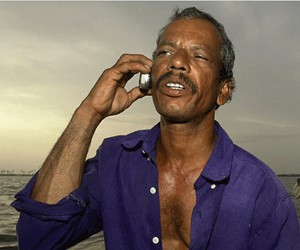
 Anyone following the keynote speeches at Nokia World 2010 this week will have observed the showcasing of Nokia’s next-generation mobile technology…some of which looked pretty impressive.
Anyone following the keynote speeches at Nokia World 2010 this week will have observed the showcasing of Nokia’s next-generation mobile technology…some of which looked pretty impressive.
However, just as the two-day event was coming to a close, Interbrand’s best global brands for 2010 were being announced. And despite Nokia being the only non-US brand in the top ten, it had fallen from 5th to 8th place, representing a drop in value of 15%.
Why? Well, according to Interbrand’s report, “[Nokia] has fallen behind where the most profitable sectors of the market have developed – most notably, smartphones”.
Backtrack to Nokia World 2010 and it soon becomes clear where Nokia is positioning itself.
Mary McDowell, Executive Vice President for Mobile Phones at Nokia, states that “80% of the world’s population is now within range of a cell-tower – people aren’t going to use PCs to connect [to the Internet], they’re going to use affordable mobile devices”.
To cut a long story short, it seems that Nokia plan to do for the mobile market what netbooks did for the PC market by providing affordable mobile devices for emerging markets.
And in the company’s own words Nokia want to help connect the next billion to the Internet so they can, according to McDowell, “find the best price for their crops or join a social network”.
And Nokia have every chance of succeeding. You only have to look at the staggering disparity between mobile and PC users in India to see the potential for social media growth within mobile markets in developing economies.
India has sixty million registered Internet users, representing a mere 5% of the population. This compares with six hundred million mobile phone users, which equates roughly to half the population. That’s a massive market to tap into.
And if you throw into the equation the rising popularity of Facebook in India, recently overtaking Google’s Orkut as the number one social networking tool with 21 million unique visitors a month and a newly opened office on the ground in Hyderabad, it seems the sky’s the limit for social media across the developing world.
There are currently 400 million Facebook subscribers worldwide, which is less than ten percent of the Earth’s population.
However, Indonesia is Facebook’s third biggest market after the US and the UK. And Philippines is often referred to as the social networking capital of the world, where Friendster rules the roost. Even the Philippine Supreme Court is on Twitter and Facebook.
But regardless of whether Facebook, Orkut or Friendster is your social networking tool of choice, the message is pretty clear. With 38% of Chinese mobile subscribers accessing the Internet from their hand, compared with only 27% of Americans, it seems that mobile phones and social media are a match made in heaven in developing countries
So whilst Nokia may well have fallen behind in the smartphone market, it certainly isn’t missing a trick when it comes to tapping into a new customer base. A billion more people can’t be bad, can it?
Get the TNW newsletter
Get the most important tech news in your inbox each week.




